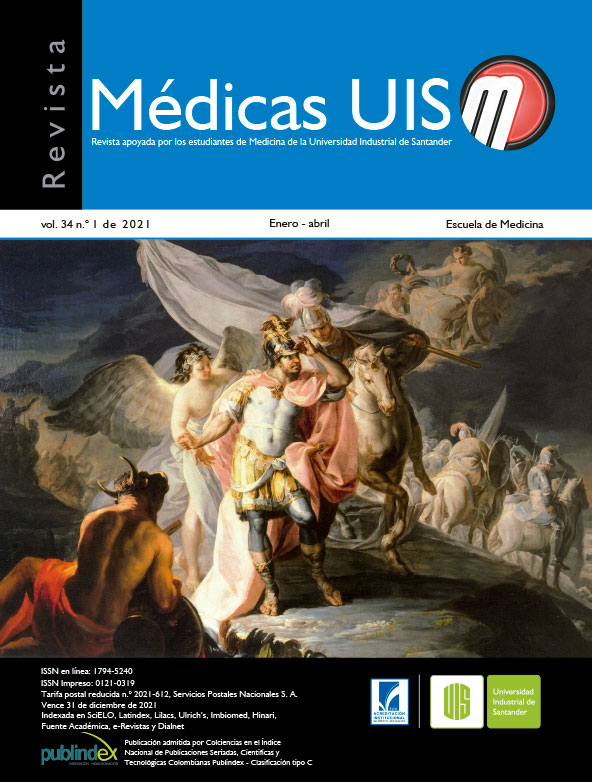Abstract
Hailey-Hailey disease, also called benign familial pemphigus, corresponds to a debilitating genodermatosis that is transmitted through an autosomal dominant pattern, with a prevalence of around 1 in 50,000 cases. The family history report is present in up to 60% of patients. It is characterized by the presence of chronic and recurrent vesicles, erosions and exulcerations in flexural areas. Treatment can be challenging, because despite management with topical therapies, systemic corticosteroids, systemic immunomodulators, and
the use of lasers, no therapy has achieved long-term remission.We present the case of a male patient, middle adult, without any family history, with a history of scaly surface plaques and chronic recurrent hematocostras and atypical clinical presentation given the location of predominant lesions in the upper limbs, with initial suspicion of vulgar psoriasis, with subsequent biopsy and pathology report showing typical PBF histology. Therefore, management with systemic corticosteroids without evidence of adverse reactions and with long-term remission is indicated. MÉD.UIS.2020;34(1):101-6
References
Lamb S. Benign familial pemphigus. DermNet NZ [Internet]. Dermnetnz.org. 2016 [cited 10 May 2020]. Available from: https://www.dermnetnz.org/topics/benign-familial-pemphigus.
Benign chronic pemphigus. Genetics Home Reference [Internet]. Medlineplus.gov. 2016 [cited 10 May 2020]. Available from: https://medlineplus.gov/genetics/condition/hailey-hailey-disease/.
Hailey-Hailey disease. NORD [Internet]. 2015 [cited 10 May 2020]. Available from: https://rarediseases.org/rare-diseases/hailey-hailey-disease/.
Helm TN. Familial Benign Pemphigus (Hailey-Hailey Disease). Medscape Reference [Internet]. 2017 [cited 10 May 2020]. Available from: http://emedicine.medscape.com/article/1063224-overview.
Familial benign chronic pemphigus. Orphanet [Internet]. 2006 [cited 10 May 2020]. Available from: http://www.orpha.net/consor/cgi-bin/OC_Exp.php?lng=EN&Expert=2841.
arahnik B, Blattner CM, Mortazie MB, Perry BM, Lear W, Elston DM. Interventional treatments for Hailey-Hailey disease. J Am Acad Dermatol. 2017; 76(3):551-558.e3.7.
Prateek K, Banwarilal MR, Chaudhary SS, Garg M. Hailey Hailey disease-a rare case report. Int J Res Dermatol. 2016;2(2):36-39.
Vélez A, Medina I, Moreno JC. Enfermedad de Hailey-Hailey. Piel. 2001;16(6):272-277.
British Association of Dermatologists [Internet]. Patient leaflet; c2008-2014. [Cited 2016 Feb 09] Available from: https://www.bad.org.uk/pils/hailey-hailey-disease/.
Rodríguez M, Ramos A, Sánchez D. Pénfigo benigno familiar (Enfermedad de Hailey-Hailey). Rev Cent Dermatol Pascua. 2009;18(1):25-30.
Ibrahim O, Hogan SR, Vij A, Fernandez AP. Low-Dose Naltrexone Treatment of Familial Benign Pemphigus (Hailey-Hailey Disease). JAMA Dermatol. 2017;153(10):1015-17.
rora H, Bray FN, Cervantes J, Falto-Aizpurua LA. Management of familial benign chronic pemphigus. Clin Cosmet Investig Dermatol. 2016;9:281-290.
Biocalti G, Aurizi C, Barbieri L, Cialfi S, Screnpanti I, Talora C. Efficacy of the melanocortin analogue Nle4-D-Phe7-αmelanocyte-stimulating hormone in the treatment of patients with Hailey-Hailey disease. Clin Exp Dermatol. 2014;39:168-174.
White F, Shvartsbeyn M, Meehan SA, Urbanek RW. Benign familial pemphigus (Hailey–Hailey disease). Dermatol Online J. 2015;21(12):13030/qt6z35r538.
Grönemeyer LL, Thoms KM, Bertsch HP, Hofmann L, Schön MP, Haenssle HA. Reflectance confocal microscopy and Hailey– Hailey disease: assessment of response to treatment after CO2 laser ablation. J Dtsch Dermatol Ges. 2014;12(12):1135–7.
Malan M, Xuejingzi W, Si J, Quan SJ. Hailey-Hailey disease: the role of azathioprine an immunomodulator. Pan Afr Med J. 2019;35:65.
Nanda KB, Saldanha CS, Jacintha M, Kamath G. Haileyhailey disease responding to thalidomide. Indian J Dermatol. 2014;59(2):190–2.
Cialfi S, Calabro S, Franchitto M, Zonfrilli A, Screpanti I, Talora C. Hypotonic,Acidic Oxidizing Solution Containing Hypochlorous Acid (HClO) as a Potential Treatment of Hailey- Hailey disease. Molecules. 2019;24(24):4427.
Sonthalia S, Agrawal M, Talwar A, Goldust M. Low-Dose Naltrexone-Induced Remission in Hailey-Hailey Disease Maintained in Remission with Topical Combination of Ketamine and Diphenhydramine. Indian Dermatol Online J. 2019;10(5):567–70.
Kieffer J, Le Duff F, Montaudié H, Chiaverini C, Lacour JP, Passeron T. Treatment of Severe Hailey-Hailey Disease With Apremilast. JAMA Dermatol. 2018;154(12):1453–6.

This work is licensed under a Creative Commons Attribution 4.0 International License.
Copyright (c) 2021 Médicas UIS
